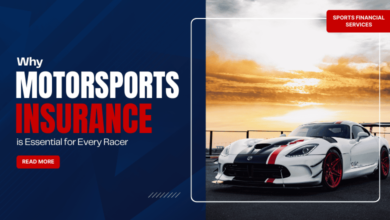Exploring Different Types of Car Claims and How to File Them

The process of filing an insurance claim varies based on your coverage type. You can learn more about this process by talking to an agent and reading your policy documents. Always remember to document the damage with photos whenever possible. It also helps to record names and contact information for any witnesses.
Collision
Collision car insurance claims cover damage to your vehicle that’s within your control (as opposed to comprehensive coverage, which covers things like a blown-out tire or a fallen tree on your parked car). It’s also called “first party” coverage.
You typically have to carry collision car insurance if you’re leasing or financing your vehicle; however, it’s a smart choice even if your car is paid off. This type of insurance helps offset the cost of repairing or replacing your vehicle in a crash and pays out your car’s actual cash value in the event of a total loss. It’s also important to note that a collision claim must be filed with your insurer, not the other driver’s. That’s why a good liability policy is essential. Luckily, you can explore https://carinsurancecheap.net for a wealth of information and insights about car insurance.
Comprehensive
Comprehensive car insurance covers non-collision damage to your vehicle, such as fire, theft and weather events. It is optional coverage that you can add to your policy. Lenders often require this coverage if you are leasing or financing your vehicle. You choose the amount of your comprehensive deductible when you purchase the policy. This can help lower your premium, but you must pay more out of pocket when you file a claim. Consider adding comprehensive coverage if your vehicle has high value or live in an area with many natural disasters or crime. However, if your car is older and not worth very much, it might not be worth paying for this type of protection.
Uninsured/Underinsured Motorist
Uninsured/Underinsured Motorist car insurance coverage is a type of optional collision coverage that covers you and your passengers in the event of an accident caused by a driver without any or inadequate car insurance. It differs from No-Fault (PIP) or Personal Injury Protection and may be bundled or sold separately. Most states require this type of driver insurance, but not all drivers have it. This type of insurance protects you when the at-fault driver’s liability limits exceed the cost of your injuries or vehicle damages. The insurance company will open a claim, investigate your injury, request and analyze medical records and billings, and try to put a dollar value on your losses. You should discuss the claims process with a lawyer.
Medical Payments
Medical payments, also known as med-pay, cover the medical bills for you and your passengers after an accident, regardless of who was at fault. This coverage is typically available if you are in your vehicle or another vehicle insured by your insurer. Most med-pay insurance policies require verification of the accident in some way, which might be accomplished by submitting the police traffic collision report or by providing a written or recorded statement from you and your doctor. Most med-pay claims do not require a copay or deductible and can be used to fill in gaps between your health or PIP insurance coverages. Some med-pay coverage can be combined with your bodily injury liability claim against the responsible driver, though that is usually not the case.
Damages
Whether or not you get into an accident, car insurance coverage can help pay for your vehicle’s damage. However, understanding the types of claims and how to file them can seem overwhelming. Depending on your policy, you might choose collision or comprehensive coverage. Both typically require a deductible, the amount you’ll have to pay before the insurance company starts paying on a claim. Collision coverage pays to repair your car after an at-fault accident, while comprehensive covers non-accident-related incidents like theft and vandalism. Some policies also include GAP coverage and roadside assistance, which can help pay for rental cars if your vehicle is in the shop for an extended period. Check out WalletHub’s guide to auto insurance coverage to learn more about these extra options.
Also Read: A Quick History Of Automobile Insurance






